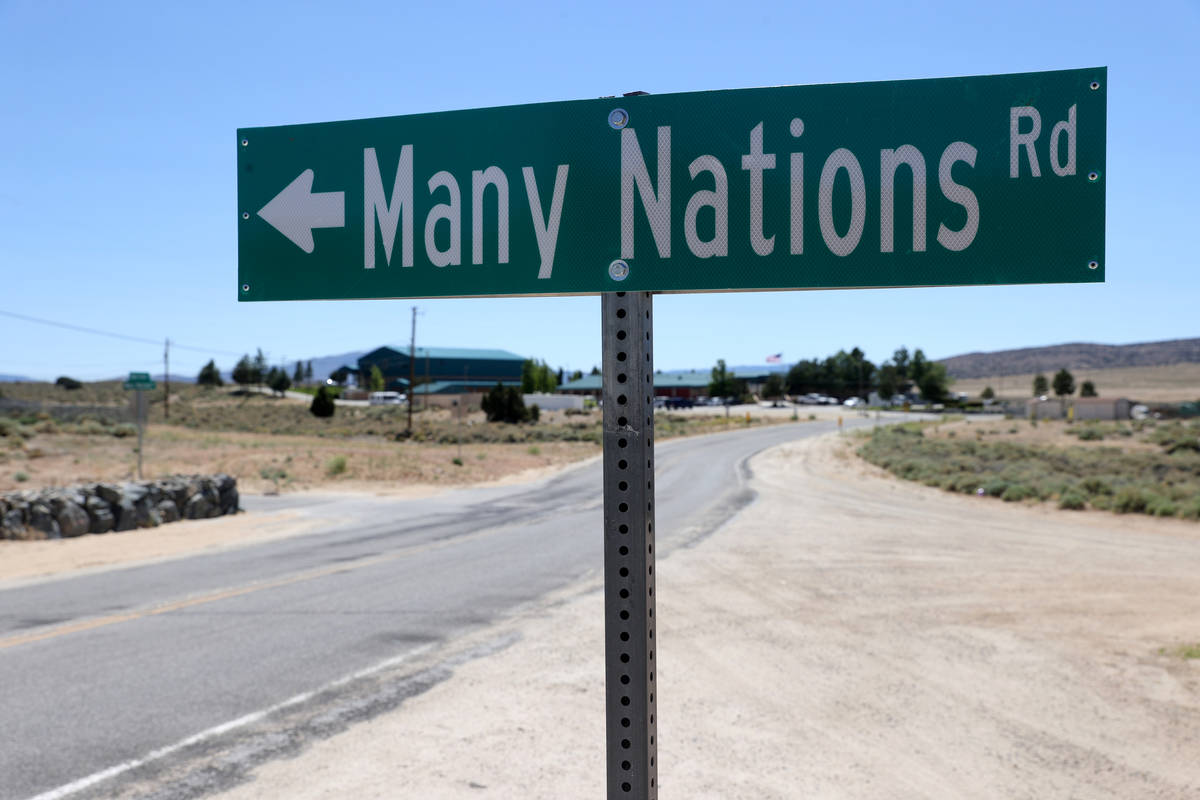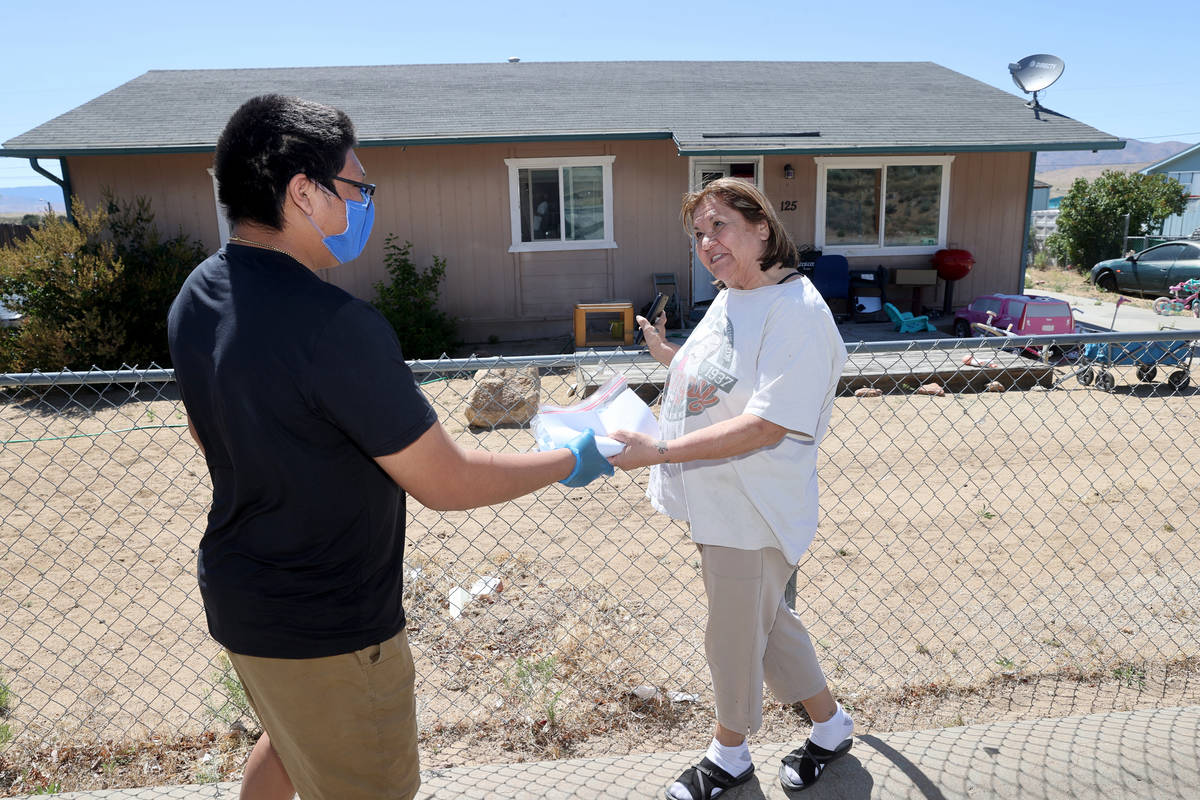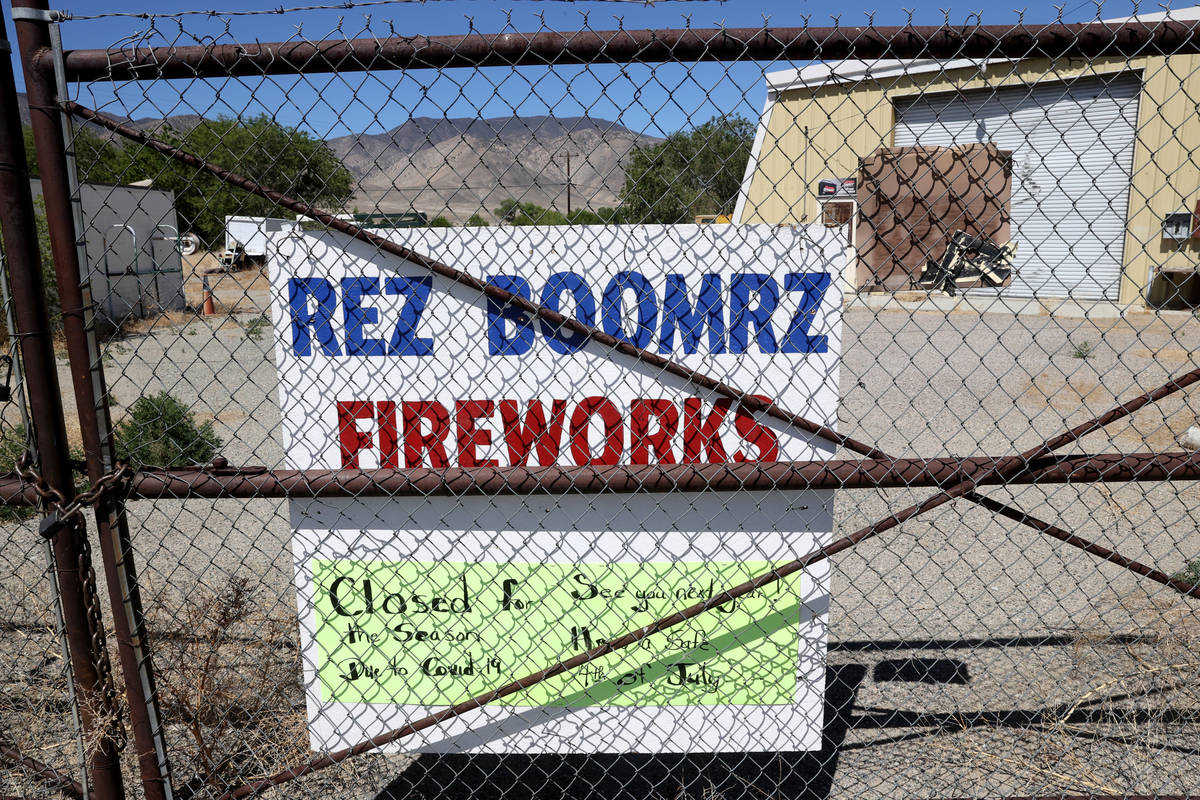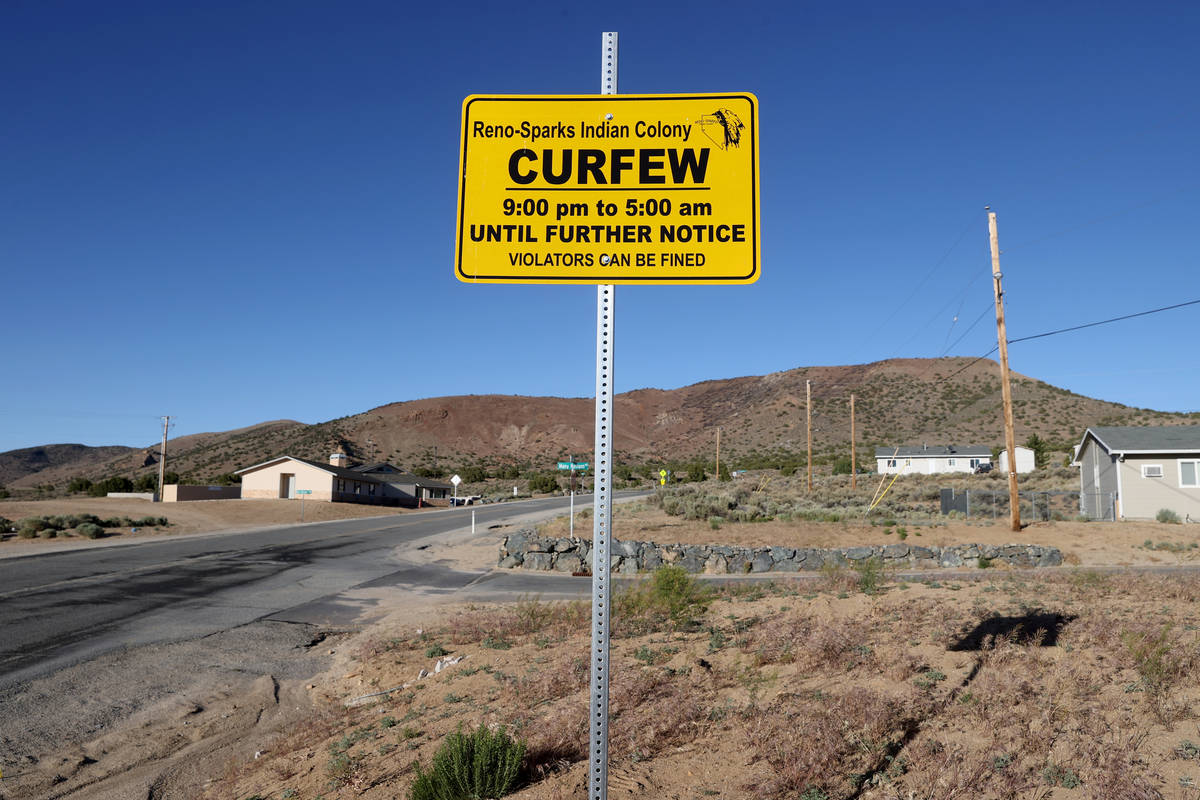Nevada’s 27 tribal nations say they were left behind amid pandemic
Nevada’s 27 tribal nations say they were left behind for two crucial months as the coronavirus crept into every corner of the state.
Amid a national shortage, they scrambled in silos for testing materials and protective equipment as Gov. Steve Sisolak’s administration worked with local governments to secure coveted supplies.
Nevada’s general population could seek out limited testing as early as mid-March, along with self-identified urban Natives.
But without early progress with state and local leaders — or timely assistance from the federal government — it would take until the end of April for tribal nations to begin independently testing their estimated 20,000 enrolled members on reservations throughout Nevada, even as case counts grew in neighboring communities.
Absent information, tribal leaders looked inward. They shut down their borders, sent employees home and focused on protecting tribal elders and securing food for their people — biding time in a “fight for our lives,” Stacey Montooth, executive director of the Nevada Indian Commission, told the Las Vegas Review-Journal.
“Our leadership takes sovereignty seriously — we are going to exercise our rights as tribal nations to the fullest extent of the law,” Montooth said. “At the same time, we are not islands. We want to be good neighbors. And we know that what’s good for Indian Country is good for Nevada.”
To this day, many tribes throughout Nevada remain on hard lockdown, facing self-imposed stay-at-home orders and evening curfews — a stark contrast to the state around them, which began reopening May 29 as part of Nevada’s Phase Two plan. That’s all possible because testing was more broadly available to Nevadans by mid-May. Sisolak announced June 24 the state would remain in phase two.
On the Walker River Indian Reservation, outsiders shot up a barricade that prevented them from entering the tribe’s jewel of a reservoir, a huge draw for outdoor recreation. The tribe’s firework stands — a popular spot for Nevadans ahead of July Fourth — will remain shuttered through the holiday.
Tribal records show 74 active COVID-19 cases as of June 19, along with 27 recoveries and three deaths — none of which appear to be included in the state’s dashboard of confirmed cases.
The Elko Band Council on Tuesday afternoon also reported its first three new cases. Testing among tribal nations remains limited.
“We’re still in crisis mode,” Montooth said. “It’s not clear that we’ve reached our peak.”
Communication breakdowns
At the start of the crisis, Montooth said a clunky new arm of Nevada’s department of emergency management can be attributed to the communication breakdown between state and tribal leaders.
It’s called the Nevada Tribal Emergency Coordinating Council, which went into operation July 2019, shortly after legislative approval.
It replaced the since-dissolved Inter-Tribal Emergency Response Council, which previously coordinated with the state’s emergency management department to respond to more isolated emergencies, like the 2017 floods, or recent wildfires in Northern Nevada.
The new council was meant to streamline communication amid crisis. In practice, two grant-funded state outreach coordinators would work with up to 27 tribal leaders, assessing their needs and arranging how best to help fulfill them.
But the pandemic affected the entire state at once.
That left the nine-month-old council scrambling, especially as one state coordinator — a tribal member — was called back to help her tribe. Her departure created a bureaucratic vacancy that under normal circumstances would have taken significant time to fill, Montooth said, but during the pandemic took even longer.
The position was ultimately filled in early June. But for that first month or so, a single coordinator on the state’s side was responsible for checking in with tribal nations — and at the time, the coordinator was checking in with only about six or seven.
The geographic diversity of Nevada’s tribes and their widely varying needs also complicated the process, Montooth said.
“We’re dealing with 27 different governments — 27 different sets of leaders who have different ideas, and who are tailoring their responses to the needs of their communities,” she said. “There’s not just one size fits all.”
One-third of Indian Country households within Nevada also do not have stable or reliable internet access, she said. And Montooth noted she’s only held her state liaison position since Sept. 1.
“It was a perfect storm,” she said.
It was not until about mid-April that the state’s single coordinator established weekly calls that included all tribes, as well as the Nevada Indian Commission and a U.S. Department of Health and Human Services representative.
The calls, which still occur weekly, are meant to support tribal efforts in testing and contact tracing.
“This probably doesn’t give them a whole lot of solace,” Montooth said of tribal communities amid those first several weeks. “But what this has done is actually part of emergency management — to reveal our gaps and weaknesses — and with that kind of valuable information, we’re going to do better.”
Still, tribal case counts don’t seem to be reflected in state tallies. Meghin Delaney, a communications director for Sisolak’s office, said state and local health authorities do not have the jurisdiction to mandate that tribes report, but she added that “reporting is strongly encouraged.”
Montooth remains skeptical, suspecting that “American Indian/Alaskan Native” numbers represented in state test results are coming from Natives who call cities like Las Vegas home but are not necessarily enrolled members of tribes in Nevada.
The state dashboard, which includes a county-by-county breakdown of case counts, also shows no such breakdown for sovereign nations or tribal health centers.
“Nobody can mandate that we share info. However, from the state’s perspective, I think most of our tribal leadership would agree it behooves our communities to be included with the state information,” Montooth said, “so we have an accurate picture of where the hot spots are and where testing is being done and analyzed, so we know where those resources need to be on the ground.”
The state dashboard as of Tuesday showed 58 confirmed cases among the “American Indian/Alaska Native” population, with three deaths.
That’s 43 fewer combined cases and recoveries than tribes reported June 19.
Questions about rapid tests
As the weeks passed, communication gradually got better, Montooth said. But tribal nations did not receive independent, rapid-results testing machines until late April, when the federal government provided 12 to share through its Indian Health Service.
Tribal leaders decided to place the Abbot ID Now machines in the hands of Nevada’s most rural tribal communities. Some opted to place their machines in neighboring health clinics so that nearby, rural Nevadans could use them, too.
“In crisis, there’s all kinds of creative thinking going on,” Montooth said.
Tribal Chairwoman Amber Torres was thankful for the machine the Walker River Paiute Tribe received around the end of April or early May. The reservation is about two hours outside of Reno and, as she described, “very rural and very desolate.”
“Initially, we didn’t have anything at the local level,” she said. “We were lucky that we were one of the tribes to receive one.”
As of Tuesday, her tribe of 2,700-plus members has reported zero cases.
But even those machines are not a perfect solution: They only work with proprietary cartridges, which means they’re more expensive and harder to come by than the mass-produced tests used in Nevada’s public health labs.
Abbot machines also have varying levels of accuracy, and some operators have reported false-negative results, according to the U.S. Food and Drug Administration.
By comparison, the state has 15 Abbot machines, all of which are placed on “strategic reserve,” Caleb Cage, Nevada’s COVID-19 response director, told the Review-Journal.
“Nevadans are not on those machines,” he said.
Instead, the state relies on public health labs for analysis, which Cage said yield more reliable test results.
“It certainly isn’t an ideal situation,” Montooth said of the machines. “But at the time, it was the best thing out there.”
Cage said the state is working with Montooth to provide more testing cartridges. More recently, the state has also introduced community testing efforts on tribal lands.
Tribal Chairman Arlan Melendez of the Reno-Sparks Indian Colony said the Nevada National Guard on June 12, for instance, set up a temporary testing center on the colony’s Hungry Valley Reservation, about 18 miles outside of Reno.
An estimated 200 people of the tribe’s 1,180 members were tested that day, he said.
Montooth said at least four other tribal nations have recently seen community testing. But some tribal nations who requested community testing are still waiting on it. And there is still a need for better, independent testing capabilities among tribes and more access to contact tracers.
The state continues to stay in touch with tribal leaders to support those efforts, Delaney said.
“It’s really difficult for a tribe to stay in a closed-down situation when we see what’s happening around us — malls opening, stores opening, salons opening,” Chairman Melendez said, citing the the Reno-Sparks Indian Colony’s downtown Reno reservation.
The Las Vegas Paiute Tribe also has a downtown colony, just north of Fremont Street, as well as a 4,000-acre reservation northwest of the city. A tribal representative did not respond to a request for comment.
East of Las Vegas, the Moapa River Indian Reservation has restrictions in place as well. The Moapa Band of Paiutes have reported zero cases.
Federal support
Federal CARES Act funding, which could have bolstered Nevada’s tribes early on, also was not released until about 60 days into the pandemic.
Though long-awaited, it came with no guidance on how best to appropriately allocate it, though it did come with a spending deadline — Dec. 31.
“Based on centuries of mistrust, the tribes are being very, very careful about how it’s spent,” Montooth said.
On the 325,000-acre Walker River reservation, Torres is looking at updating the tribe’s long-outdated water and sewer infrastructure, which would provide more access to running water and in turn promote better hygiene.
She also is looking at building a new health clinic, as the tribe’s current clinic is more than 100 years old. But she is working against a ticking clock.
“We are very rural; it’s hard to find contractors or engineers — maybe they don’t live in Reno, maybe they live in Phoenix,” she said. “That first initial phase could take six months, and we’re looking at needing to have things built in six months.”
Melendez, of the Reno-Sparks Indian Colony, wondered if the delay and lack of guidance was intentional, so that tribal leaders would be forced to pay it back next year, either because they were reluctant to spend it all by deadline or because they spent it incorrectly.
He pointed to the Tribal General Welfare Exclusion Act of 2014, which followed a long history of Internal Revenue Service agents intruding on tribal lands and “nickel-and-diming” tribes by way of audits and examinations, which picked apart and taxed tribal general welfare payments.
Tribal welfare payments are need-based and generally support housing and food assistance, along with student scholarships, according to Addie Rolnick, a UNLV law professor who specializes in Indian law and critical race theory. The federal government provides some of that money, and tribes supplement it with revenue.
For years, tribes argued taxing those benefits not only violated federal law and treaties but was also culturally offensive. The 2014 law clarified that general welfare payments made by a tribe to its citizens should be treated the same way as state welfare payments, which are not counted as income under IRS rules.
“So you can see how tribal leaders are not really trusting when it comes to this idea of setting us up to fail,” Melendez said.
He’s looking at spending the federal funding on modular housing or RVs, which could be set aside for isolation in case there’s a surge in cases or second wave.
Reservations closed
For now, tribes ask that neighboring Nevadans respect that reservations remain closed.
“I think the outside community has to understand that the tribes are taking it more seriously,” said Melendez, of the Reno-Sparks Indian Colony.
He pointed to centuries of history, when European colonizers exposed Native Americans to disease, wiping out generations of people.
“That’s embedded in the minds of Native Americans; we have a mindset that we recognize what’s happened in the past and it’s never left us,” he said.
He thinks of the Las Vegas Paiute Tribe, for instance, which has about 55 members.
“If they get COVID, they could get wiped out,” he said.
Torres, with the Walker River Paiute Tribe, said the pushback from outsiders regarding the tribe’s closed-off reservoir has been difficult to bear as she works to care for her people.
“That was one disheartening thing — that people didn’t respect us as a sovereign nation and wanted to get in here as if it was their right, when ultimately it is a privilege,” she said.
She tries to focus on the ways her community and other tribal nations have come together. She pointed out a community food store established early on: A few staff take orders, members pay over the phone, then drive through to pick up items.
She also mentioned that “more and more people” are creating and maintaining personal gardens, a good mental health outlet that increases food sovereignty and encourages people to “revisit their old teachings.”
“I think that’s really the beauty of it,” she said.
And though the tribe has taken a huge economic hit amid the lockdown, Torres said, “As long as our people are safe — money comes and goes, but the people do not.”
Contact Rachel Crosby at rcrosby@reviewjournal.com or 702-477-3801. Follow @rachelacrosby on Twitter.































